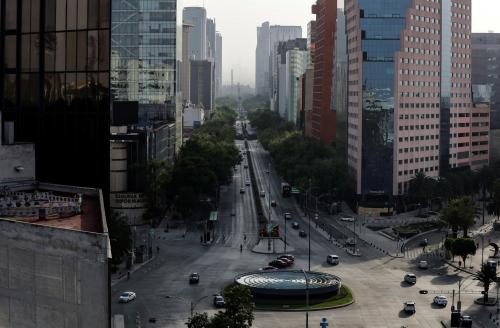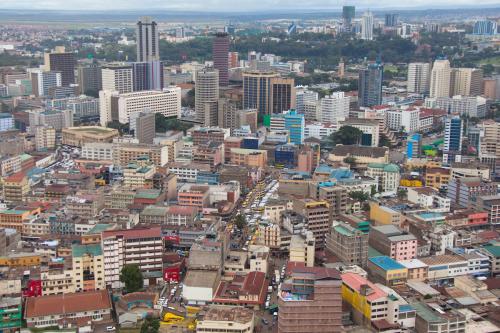In late September, during the 2020 U.N. General Assembly, the Brookings Institution and the United Nations Foundation hosted the second annual event, American Leadership in Advancing Progress on the Sustainable Development Goals (SDGs). It showcased leadership, a sense of community, and an honest reflection of the challenges and opportunities facing Americans as they pursue social and environmental progress.
The crises precipitated and exposed by COVID-19 and the killing of George Floyd have highlighted the intersections among racial equity, health, safety, economic resilience, and sustainability. They’ve also demonstrated the extent to which cities, communities, and local institutions are on the frontlines in tackling local issues with global implications. The event enabled U.S. governors, mayors, business leaders, university leaders, youth, and other local leaders to display how the SDGs have catalyzed local progress while reaffirming American values and American leadership globally.
Several key takeaways emerged:
1. Local leadership is critical for global progress.
While negotiated originally by and for nation-states, the SDGs are now a local reality. And in today’s COVID environment, it is often local communities and leaders providing solutions, innovations, and approaches to protect the health and well-being of citizens. With the U.S. currently the only OECD and G20 country that has yet to volunteer to report on its national SDG progress, these efforts send a powerful message about American global leadership.
Mayor Eric Garcetti on the leadership of cities
“Our global goals come to life when we understand them as local goals.” – Mayor Eric Garcetti
2. Equity is at the heart of the agenda.
Today’s crises have laid bare deeply entrenched inequalities and systemic racism. The SDGs encourage policies to reach the most vulnerable first, to benefit those who have been left behind by the global economy. Participants repeatedly stressed the importance of putting people back at the center of the immediate responses to COVID-19 and the long-term changes necessary for a transformational recovery. “Sustainability” is now understood to extend beyond the environment to incorporate equity, justice, and opportunity, to ensure the long-term viability of communities.
Yvette E. Pearson on the importance of societal input in the problem-solving process
James H. Garrett Jr. on Carnegie Mellon’s sustainability initiatives
“At the moral heart of the SDGs is the commitment to leave no one behind.” – Ambassador Elizabeth Cousens
3. Climate change and the SDGs are a crucial part of recovery plans.
While the country grapples with a global pandemic, the climate crisis remains. September, for example, was the hottest month on record, and as this discussion transpired most of the West Coast was literally on fire. Participants reinforced that climate action and SDG achievement are two sides of the same coin, and the opportunity to recover better requires American leadership to integrate the two in their response and recovery plans.
Senator Brian Schatz on executing the SDGs in a way that works for everybody
4. Leadership is coming from all quarters across America.
The SDGs offer a common language, described by Kathleen McLaughlin as a “Rosetta Stone,” to connect business, government, academia, and civil society to align around priorities and contribute toward progress. Businesses like Verizon and Walmart are embracing the SDGs as part of their core business strategy rather than confining it to their social responsibility work. Carnegie Mellon University became the first university worldwide to release a Voluntary University Review to map the university’s efforts against the SDGs, following the lead of local governments such as New York City, Los Angeles, and Hawaii. And individuals—most notably youth—from across locations, backgrounds, and sectors are embracing their role in advancing sustainable development.
Kathleen McLaughlin on business working alongside others for the vision of the SDGs
Rose Stuckey Kirk on the responsibility of embracing the SDGs
“Growing up, I believed that global issues were to be left to the grownups. … I was wrong.” – Dustin Liu
5. Partnerships are necessary for addressing interdependencies.
The COVID-19 pandemic has made clear that issues often thought of as separate are instead deeply intertwined. What on the surface is a health issue has had significant implications for the economy, education, climate change, racial and gender inequality, and so many other issues. Building partnerships and connections between sectors is key. The SDG framework encourages seeing the connections between issues and finding solutions that make progress across them. Building partnerships and connections between sectors is key.
Gov. David Y. Ige on the common language of the SDGs
6. Hope is the catalyst for a better future.
Rooted in humility and an honest reflection of the myriad and real challenges facing American communities, participants put forward determined calls to action. The growing commitment to the principles and the spirit of the SDGs is inspiring hope and resolve across the U.S. It enables leaders and citizens across generations, sectors, and perspectives to band together and leverage their contributions for collective impact. As Fatimata Cham so poignantly said, “In times of injustice and in times like these, if you listen quietly, hope is the sound of your own voice.”
Fatimata Cham on listening quietly to the sound of your own voice
Note: The authors greatly appreciate Kaysie Brown’s leadership and guidance in putting together this event and summary.







Commentary
American leadership in advancing the SDGs to achieve equity and sustainability
November 12, 2020